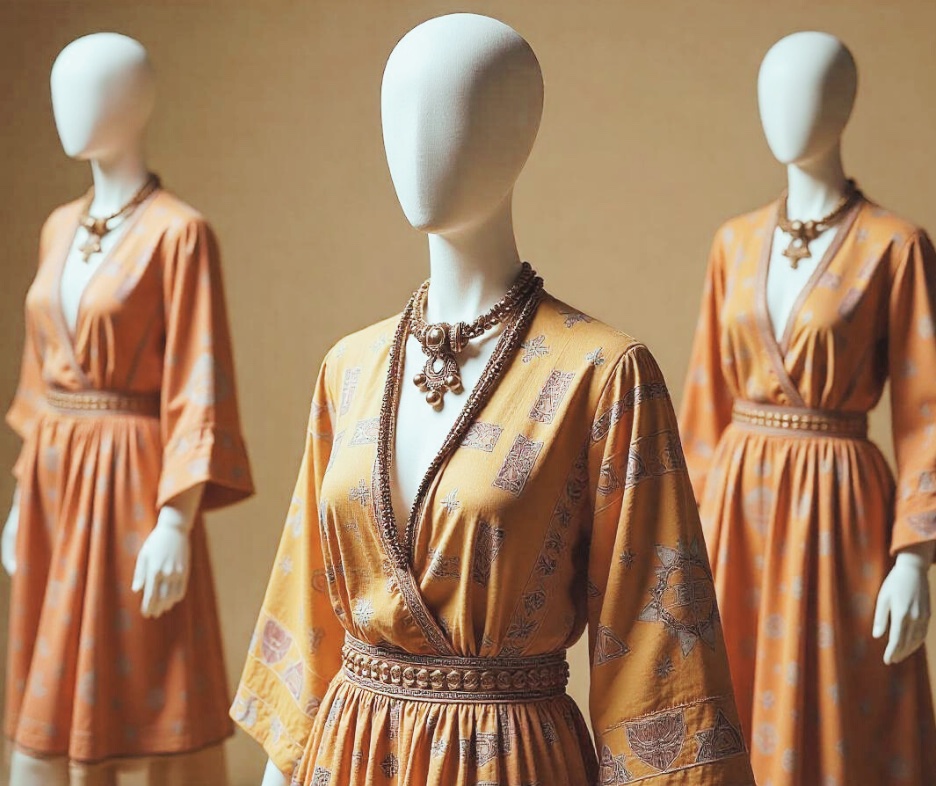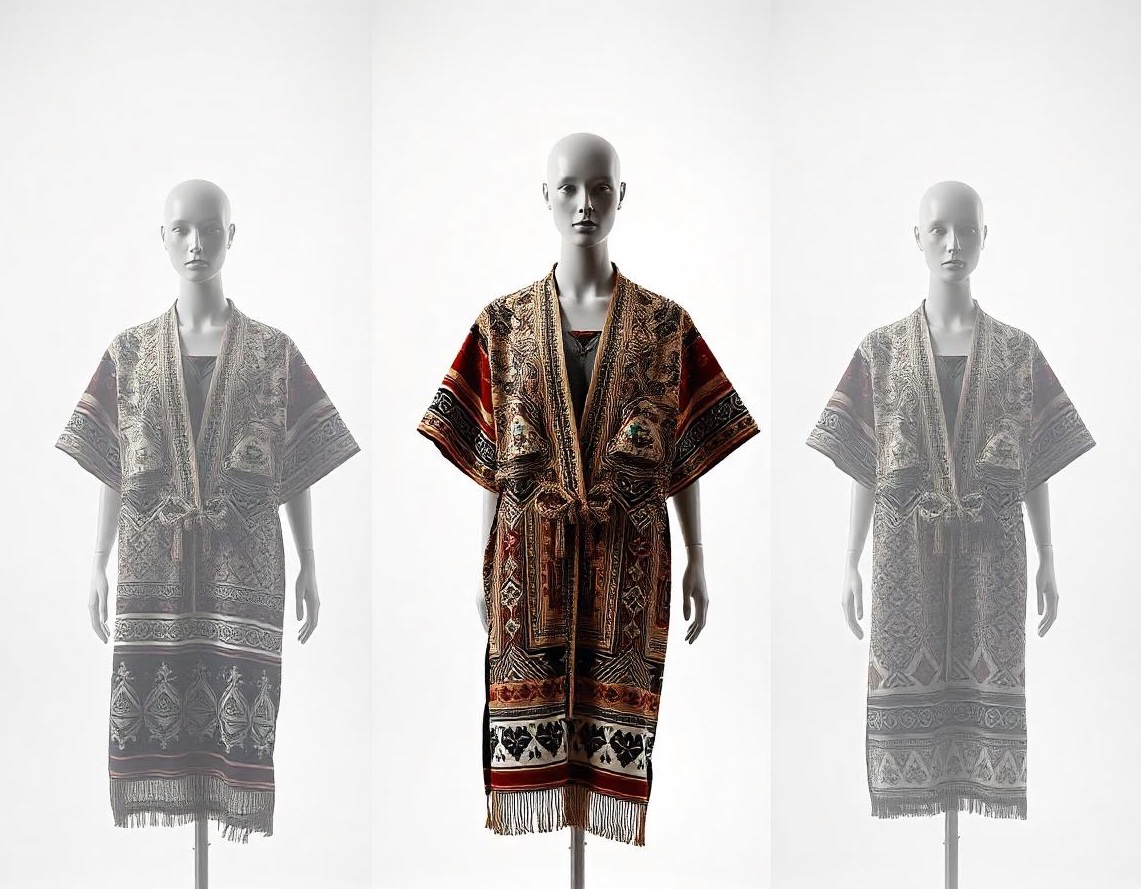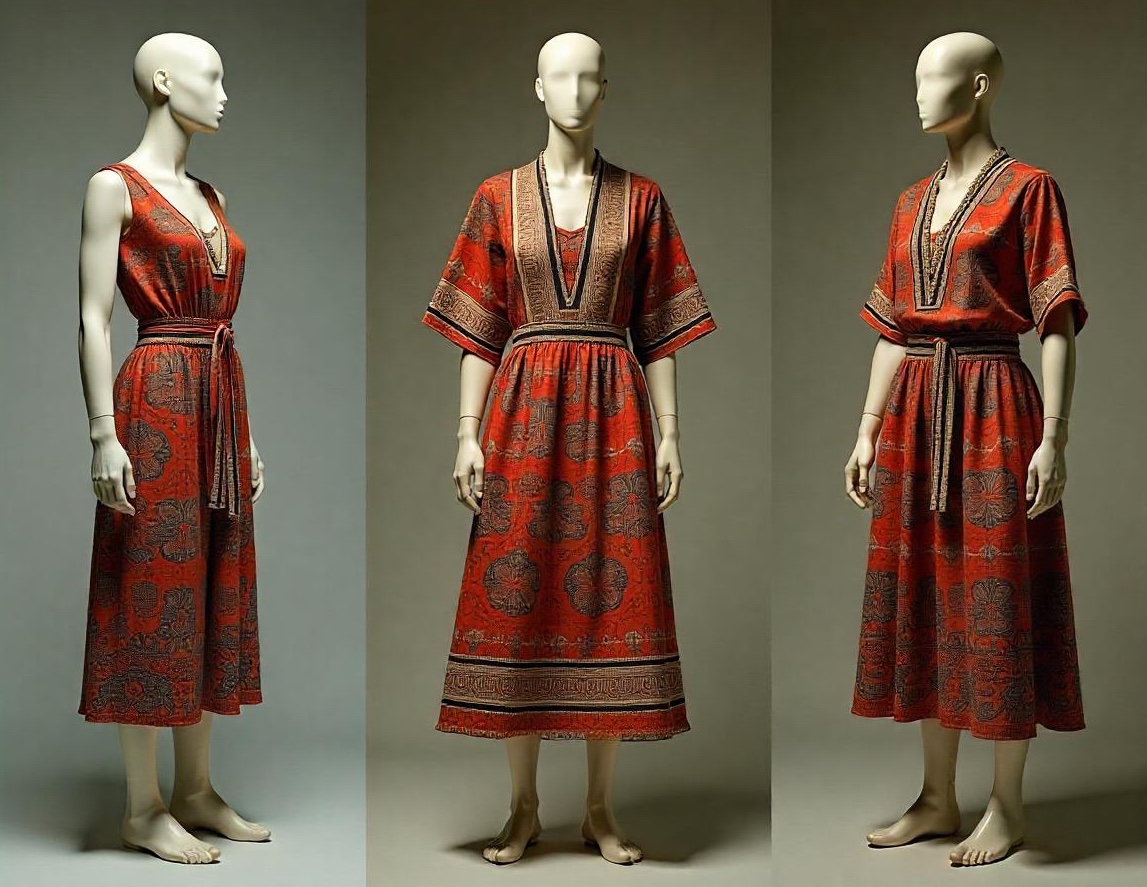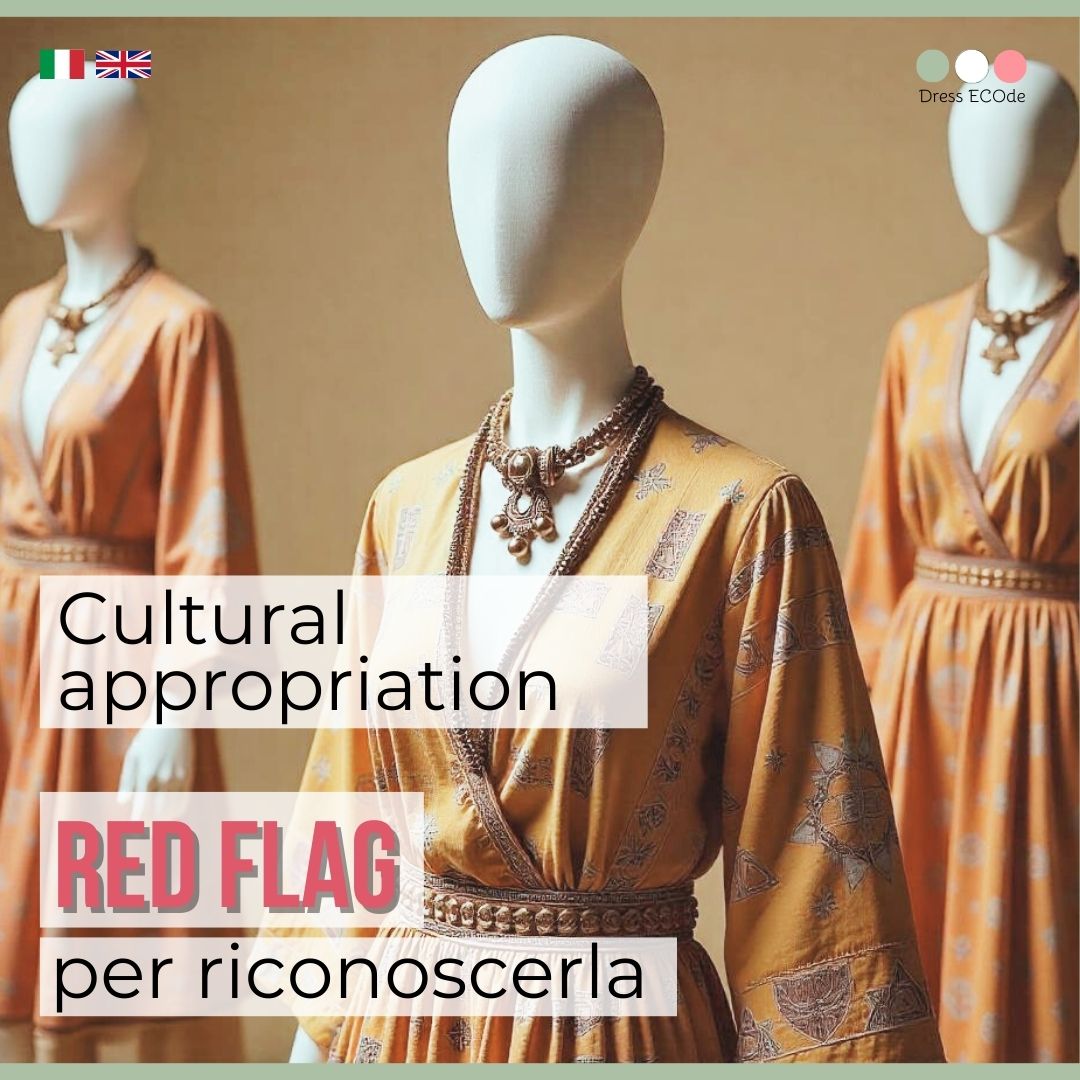
Cultural Appropriation in Fashion: A Guide to an Ethical and Sustainable Fashion System
 Fashion often draws inspiration from different cultures, but when it happens without recognition or financial compensation, it risks slipping into cultural appropriation. It is essential to distinguish between appreciation and appropriation: while the former implies respect and recognition, the latter involves the use of cultural elements without consent, mainly for profit.
Fashion often draws inspiration from different cultures, but when it happens without recognition or financial compensation, it risks slipping into cultural appropriation. It is essential to distinguish between appreciation and appropriation: while the former implies respect and recognition, the latter involves the use of cultural elements without consent, mainly for profit.
In essence, cultural appropriation refers to the act of borrowing, imitating or adopting elements of one culture by members of another culture, often without understanding, attributing or respecting the meaning and cultural context of those elements (Chumo 2023).
The use of indigenous symbols is growing, but without due respect. Pham and Nguyen (2018) analyzed the phenomenon in fashion magazines and social media, finding that the use of indigenous cultural symbols has increased in the last five years, often without recognition or attribution. The result? Protests and negative reactions from the communities involved.
Fashion Weeks: Between Inclusivity and Appropriation
Kim and Park (2020) compared different global fashion weeks, highlighting that while some events promote authentic collaborations with designers from different cultures, others continue to present collections with culturally appropriated elements.
Marginalized designers struggle to preserve their culture. Smith and Johnson (2016) interviewed designers from marginalized communities, revealing that many of them feel pressured to conform to market trends, risking unwittingly appropriating their own traditions.
Differences between appreciation, inspiration and appropriation
The topic is complex, starting from the boundary between taking inspiration and appropriating elements of another culture. Let’s try to clarify.
- Appreciation → Recognizing and celebrating another culture with respect, often involving the communities of origin and giving them credit.
- Inspiration → Allowing oneself to be influenced by aesthetic, symbolic or technical elements of a culture without copying them directly. Inspiration occurs in a contextualized and conscious way, avoiding distorting the original meaning.
- Appropriation → Adopting elements of a culture without understanding or respecting the context, often simplifying them, emptying them of their meaning or exploiting them for commercial purposes without involving the community of origin.
⚠️ How to recognize cultural appropriation?
In the following images we report some Red Flags to recognize cultural appropriation in fashion and discover the warning signs that should not be underestimated. Click on the photo below:
Examples of cultural appropriation
In this reel we talk about some cases that have occurred in the fashion industry.
Impact on the cultures involved
- Exploitation without recognition – The communities that created certain designs, fabrics, or symbols often receive neither credit nor financial compensation generated by their creativity and craftsmanship.
- Loss of cultural meaning – When an item is marketed without respect for its original context, it can lose its spiritual or identity value, reducing it to mere fashion trends.
- Reinforcement of stereotypes – The Critical Race Theory (CRT), founded by a group of lawyers including Derrick Bell and Kimberlé Crenshaw, helps us understand how cultural appropriation reinforces stereotypes, discrimination, and racial hierarchies (Chumo 2023).
- Lack of diversity and inclusion – Indigenous and local communities often have difficulty being involved, resulting in them being underrepresented and exacerbating the lack of diversity, both in design and representation, that fashion is often accused of.
- Modern Cultural Colonialism – Cultural appropriation perpetuates power dynamics in which dominant cultures profit economically and symbolically from elements belonging to minorities, without contributing to their well-being. Scholars such as Edward Said, Homi Bhabha, and Gayatri Spivak have highlighted how colonial legacies have shaped fashion, influencing the way in which cultural elements are adopted and reinterpreted.
Risks for brands
In the age of cultural awareness, even a small mistake can make a brand appear insensitive and careless. Taking cultural elements without proper context and respect can expose you to several significant risks:
- Image and reputation damage – If a brand is accused of cultural appropriation, it can suffer a negative backlash on social media and in the press, losing consumer trust.
- Boycotts and lost sales – Consumers, especially younger generations who care about ethics and diversity, may stop buying from a brand that is perceived as insensitive or disrespectful. Chen and Lee (2019) showed that consumers who are informed about cultural appropriation practices tend to boycott the brands involved and prefer brands that value the culture in an authentic way.
- Lawsuits and compensation claims – Some cultures are working to legally protect their traditions. After Carolina Herrera was accused of copying embroidery from the indigenous community of Tenango without permission, the Mexican Ministry of Culture once again accused Zara of copying traditional “huipiles” dresses from the state of Oaxaca in 2021.
- Need to manage PR crises – Brands that run into controversy often have to make amends with public apologies, donations, or collaborations with affected communities, but they can’t always repair the damage.
 Strategies to Stop Cultural Appropriation
Strategies to Stop Cultural Appropriation
Understanding cultural meanings
It is not enough to superficially appreciate a design element. It is necessary to delve deeper and understand what it really represents, studying the cultural meaning of the elements to avoid involuntary appropriations.
Collaborating authentically with cultural communities
Include designers and artists from the cultures represented in the creative process. Respect is manifested through genuine collaborations and seeking partnerships with individuals from diverse cultural backgrounds.
Transparency and attribution
Declaring the origin of a design and properly acknowledging when cultural elements are incorporated demonstrates fairness and true respect for cultures to customers. This transparency builds trust with consumers and demonstrates a commitment to responsible practices.
Supporting cultural communities
Ensure that artisans and creatives are compensated fairly for their contributions.
Educating consumer
Educating consumers about the implications of cultural appropriation can lead to more responsible purchasing decisions. Social media has a key role in both amplifying instances of cultural appropriation and promoting education and cultural awareness. Stricter content guidelines and responsible use of platforms by influencers and brands are needed. Fashion media and influencers should engage in educational efforts to spread awareness.
Building a strong legal framework
Current laws do not adequately protect cultural heritage. Ng and Wong (2018) analyzed the legal challenges of cultural appropriation in fashion, highlighting that current regulations do not effectively protect marginalized cultures. Collaboration between governments and the fashion industry to develop stronger regulations that safeguard communities’ cultural heritage is essential.
Creating safe and inclusive spaces
Marginalized designers struggle to preserve their culture. Smith and Johnson (2016) interviewed designers from marginalized communities, revealing that many of them feel pressured to conform to market trends, risking unwittingly appropriating their own traditions. Creating safe and inclusive spaces that allow designers to express their identities without commercial pressures can reduce this risk.
 Boundaries between Inspiration and Appropriation
Boundaries between Inspiration and Appropriation
- Involvement of the community of origin: If a designer works with artists, artisans or experts of the culture from which he draws inspiration, giving them recognition and compensation, it is inspiration. If instead he takes elements without permission or recognition, it is appropriation.
- Modification and contextualization: If a cultural element is reinterpreted with sensitivity and respect, without stripping it of its identity and without distorting its meaning, it is inspiration. If it is decontextualized and used only as an ornament, it is appropriation.
- Intention and impact: If the goal is to pay homage to a culture with respect and without unilateral advantages, it is inspiration. If instead the result brings economic advantages to those who appropriate a symbol without giving anything back to the community of origin, it is appropriation.
A practical example:
- Inspiration: A brand that studies African textile patterns and collaborates with local artisans to create a collection while acknowledging their contribution.
- Appropriation: A luxury brand that uses Maasai patterns on accessories without consulting or compensating the Maasai community.
In short, the key is to respect and actively engage with the culture that inspires you.
Conclusions
Cultural appropriation is a concept deeply intertwined with the fashion industry, where trends and implications intersect in complex ways. Recognizing the importance of cultural sensitivity, collaboration, and education within the industry can help mitigate the negative consequences of cultural appropriation and promote a more inclusive and respectful approach to cultural exchange in fashion (Chumo 2023).
Martinez (2017) explored the role of Instagram and TikTok, revealing that the platforms often unknowingly spread cultural appropriation practices. However, more and more users are becoming critical of brands, demanding greater respect and transparency.
In an era where consumers prize ethics and authenticity, fashion has the potential to become a powerful tool for cultural inclusion and valorization, but this can only happen through a conscious and respectful approach.
Sources
Chumo Lewis (2023), Cultural Appropriation in the Fashion Industry: A Critical Examination of Trends and Implications, Faculty of Arts, Catholic University International Journal of Arts, Recreation and Sports, ISSN: 3005- 5393
Chen & Lee (2019), Cultural Appropriation and Consumer Behavior: Implications for the Fashion Industry. Journal of Consumer Research
Kim & Park (2020), Fashion Weeks and Cultural Appropriation: A Comparative Analysis of Global Events. International Journal of Fashion Studies
Martinez (2017), Social Media and Cultural Appropriation in Fashion: An Influencer Perspective. Journal of Fashion Communication
Ng & Wong (2018), Legal Perspectives on Cultural Appropriation in Fashion. Intellectual Property Law Journal
Pham e&Nguyen (2018), Cultural Appropriation in Fashion: A Content Analysis of Indigenous Cultural Symbols. Fashion Studies Journal
Smith & Johnson (2016), Cultural Identity and Cultural Appropriation: Perspectives of Fashion Designers from Marginalized Backgrounds. Fashion and Culture Journal






